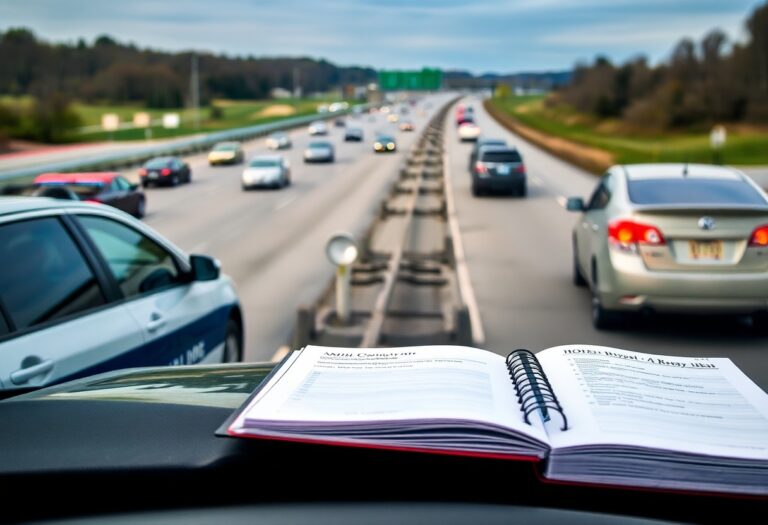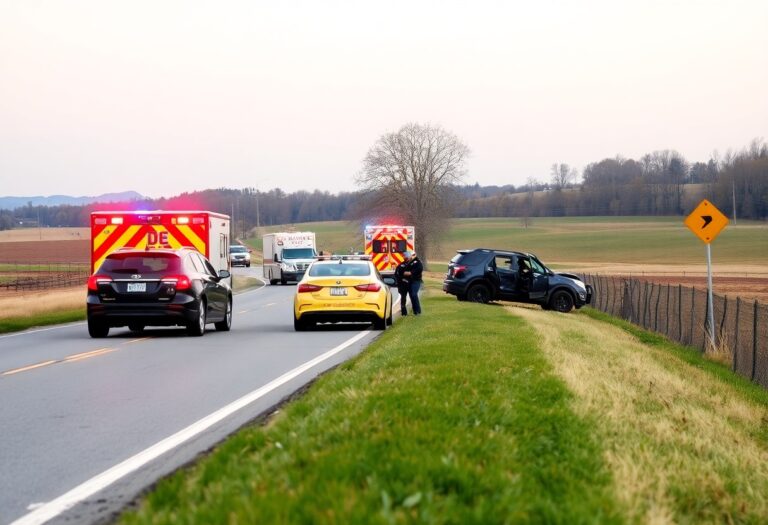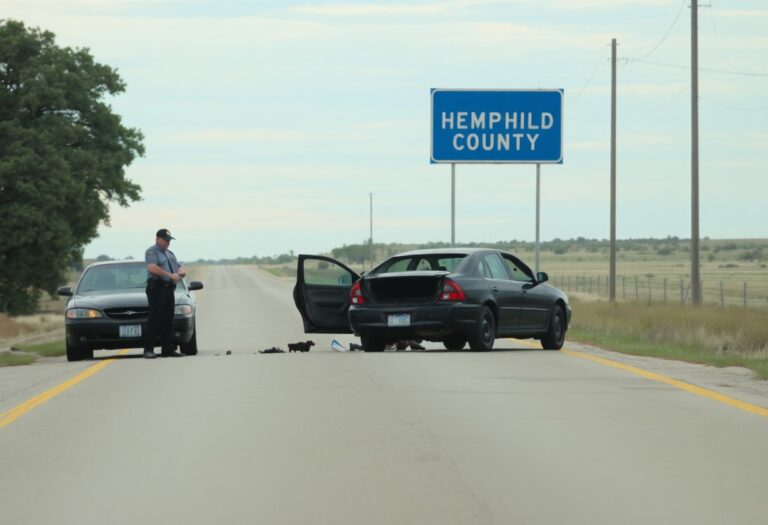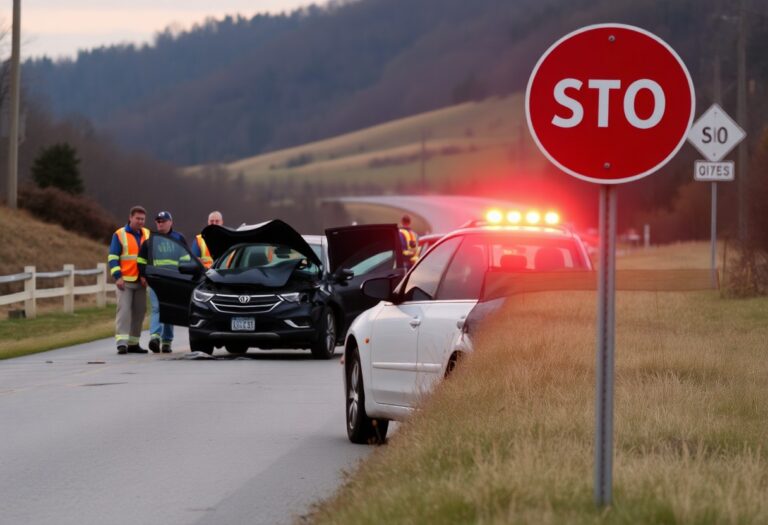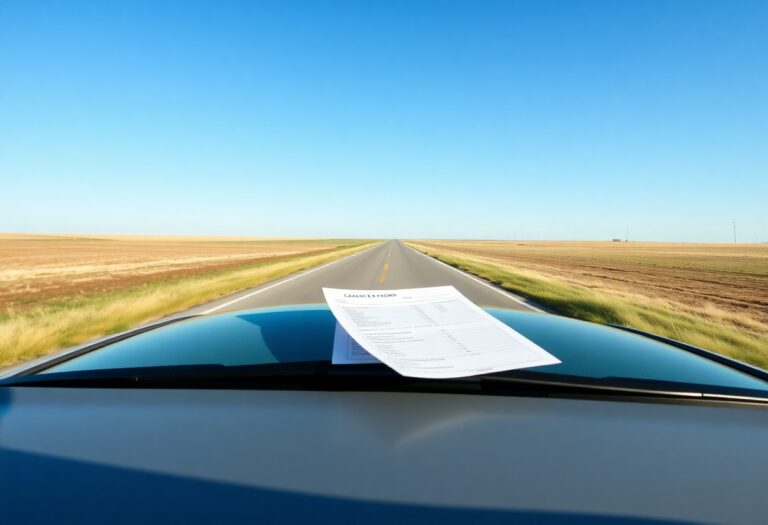This guide will help you navigate the process of obtaining auto accident reports in Somerset County, New Jersey. If you find yourself involved in an accident, understanding how to request and utilize these reports can be vital for filing insurance claims or legal actions. You’ll learn about the steps you need to take, who to contact, and the potential benefits of having a comprehensive report. Equip yourself with the knowledge to protect your rights and interests following an accident.
Navigating the Scene: Key Steps After an Auto Accident
After an auto accident, remaining calm is vital to ensure the safety of everyone involved and to facilitate the necessary reporting process. Your first step is to check for injuries and call emergency services if needed. While waiting for assistance, prioritize the safety of individuals on-site by moving vehicles to a secure location, if possible, and activating hazard lights to alert oncoming traffic.
Immediate Actions to Take Post-Collision
Assess the situation immediately following the collision. Check yourself and passengers for injuries, then tend to others involved if it is safe to do so. Instruct any injured parties to remain still and wait for medical professionals. Once everyone’s safety is addressed, contact local authorities to report the accident and allow them to document the scene.
Essential Information to Gather On-Site
Gathering the right information at the accident scene is vital for insurance and legal purposes. Record the names, contact details, and insurance information of all drivers involved, along with the make, model, and license plate numbers of the vehicles. Additionally, take note of the time, date, and exact location of the incident, as well as the weather conditions. Don’t forget to collect witness names and contact information too.
Documenting the accident thoroughly can significantly impact the success of your insurance claim. Start with photographs of the vehicles, any visible damages, and the overall scene, including street signs and traffic signals. This visual evidence can help illustrate the circumstances surrounding the accident. Writing your own account of the collision moments after it occurs can also aid in recalling crucial details later. A comprehensive record ensures you have the necessary information to support your case and helps streamline communication with authorities and insurance companies.
The Paper Trail: Understanding Auto Accident Reports
Comprehending auto accident reports is necessary for gathering evidence and understanding the circumstances surrounding the event. These documents serve as an official record of the incident, detailing the involved parties, damages, and any law enforcement findings. Having this information can significantly impact insurance claims, legal proceedings, and can provide necessary protection for you in case of disputes.
Components of a Standard Accident Report
A standard accident report typically includes key details such as the date, time, and location of the accident, descriptions of the vehicles and drivers involved, and any eyewitness accounts. It also documents injuries, damage assessments, and statements made by drivers and law enforcement. With this comprehensive information, you can establish a clear narrative of the event.
Who Prepares and Files the Reports
Police officers usually handle the preparation and filing of accident reports, especially when a crash involves injury or property damage. They collect statements, assess the scene, and generate a detailed account of the incident. It’s standard practice for officers to file this report with their department, making it accessible for involved parties to obtain a copy later.
For further clarity, local law enforcement agencies in Somerset County have specific protocols for reporting accidents. Officers often have training in accident investigation techniques and utilize specialized equipment to document the scene. Upon arrival, they may interview those involved and witnesses, ensuring all pertinent details are recorded accurately. This thorough approach enhances the reliability of the information contained in the reports, which can be invaluable as you navigate the aftermath of the accident.
Legal Implications: What the Reports Mean for You
Understanding the legal implications of your auto accident report helps you navigate potential challenges ahead. This report not only outlines the facts of the accident but also serves as a fundamental piece of evidence that can influence legal proceedings. Your ability to present a comprehensive report can streamline the insurance claim process and impact how liability is determined, affecting the compensation you may be entitled to receive.
How Reports Affect Insurance Claims
Your accident report plays a significant role in your insurance claims process. Insurers rely on the details within the report to assess liability and determine fault. A well-documented report can support your claim, leading to a quicker resolution and favorable settlement. Moreover, discrepancies in the report may be exploited by the insurance company to deny or undermine your claim.
Potential Impact on Personal Injury Cases
The details captured in your auto accident report can significantly affect your personal injury case. If the report indicates negligence on the part of the other driver, it strengthens your position when pursuing compensation for injuries and damages. Conversely, if the report suggests shared fault, your potential award may be reduced according to New Jersey’s comparative negligence laws.
The implications of your accident report extend beyond just initial claims; they can shape the trajectory of your personal injury case. For instance, if a police report clearly identifies the other party as at fault, your attorney can use this as a compelling piece of evidence in court, reinforcing the validity of your claims. Additionally, if the report includes witness statements corroborating your version of events, this further solidifies your argument and can influence settlement negotiations in your favor. All these aspects could mean the difference between a swift resolution and prolonged litigation.
Accessing Your Report: How to Obtain Your Accident Documentation
After an auto accident, accessing your accident documentation is an crucial step in handling the aftermath. You can typically obtain your report by reaching out to the appropriate local authorities, whether it’s the police department that responded to the scene or the sheriff’s office if it happened in a rural area. Each agency may have specific protocols, but generally, you can request a copy of your report through a formal request process, either in person or via mail, depending on the agency’s guidelines.
Requesting Reports from Local Authorities
To request a report from local authorities in Somerset County, begin by identifying the police department that handled your case. You may need to provide basic information such as the date of the accident, location, and involved parties. Fees may apply, often ranging from $5 to $20, depending on the agency and the type of report. Ensure you have your driver’s license and any case numbers on hand to streamline the process.
Online Resources and Fees Involved
Many local authorities in Somerset County offer online portals where you can request copies of accident reports. Typically, this involves filling out a simple form and paying any associated fees with a credit or debit card. Expect fees to range from $5 to $15, depending on the jurisdiction and whether the report is a standard copy or certified. Additionally, online services may provide faster access to your documentation, allowing you to receive it within minutes instead of days.
Online resources streamline the report acquisition process and save you time, enabling you to address your case promptly. For example, the New Jersey State Police offers an internet-based form for accident reports that can be completed from the comfort of your home. While some municipalities charge for these services, others might provide free downloadable versions. Be aware of any additional costs associated with certified copies, which may incur extra fees for mailing or expedited service, ensuring that you budget accordingly.
Common Pitfalls: Mistakes to Avoid in the Reporting Process
Your auto accident report is a key document in your post-accident journey, but navigating it can be tricky. Missteps in interpreting the report or failing to follow up with the necessary agencies can lead to complications and delays. By being aware of common pitfalls, you can streamline the process, enhance your understanding, and better protect your rights.
Misinterpreting the Report Details
Misinterpreting the report details can lead to confusion regarding fault and liabilities. It’s easy to assume that certain wording or statements indicate fault, when in reality, the details may provide a more comprehensive view that affects insurance claims or legal actions.
Failing to Follow Up Thoroughly
Failure to follow up thoroughly after obtaining your accident report can hinder your ability to pursue claims or disputes effectively. Ensuring the accuracy of the report details is vital; this involves contacting relevant parties for confirmations or corrections.
Diligent follow-up means checking all parties involved, including local law enforcement, insurance agents, and medical professionals. For example, if the report contains errors regarding witness statements or damages, rectifying these discrepancies may strengthen your case. Additionally, regularly contacting your insurance company to inquire about claim processing can expedite resolution and ensure no vital details are overlooked. Engaging with these elements can significantly influence the outcomes of your claims and legal matters.
To wrap up
Taking this into account, navigating the process of obtaining auto accident reports in Somerset County, New Jersey can be straightforward when you understand the necessary steps. Familiarize yourself with the local regulations, including who to contact and the information required for your request. By being proactive and informed, you can effectively secure the documentation needed for insurance claims and legal purposes, ensuring you protect your interests following an auto accident.







